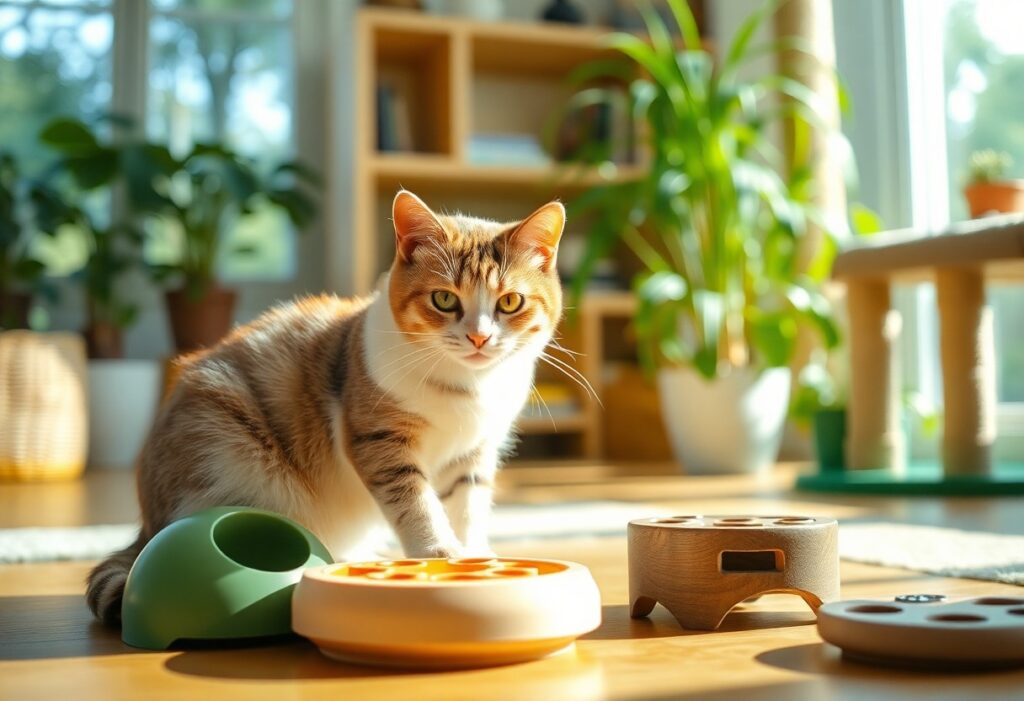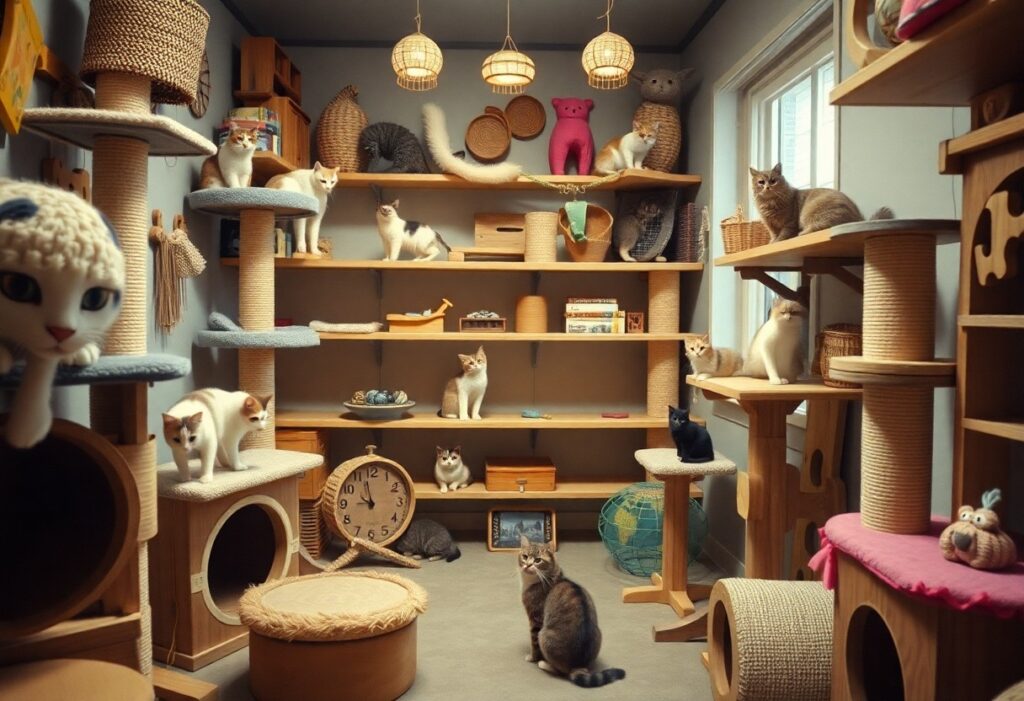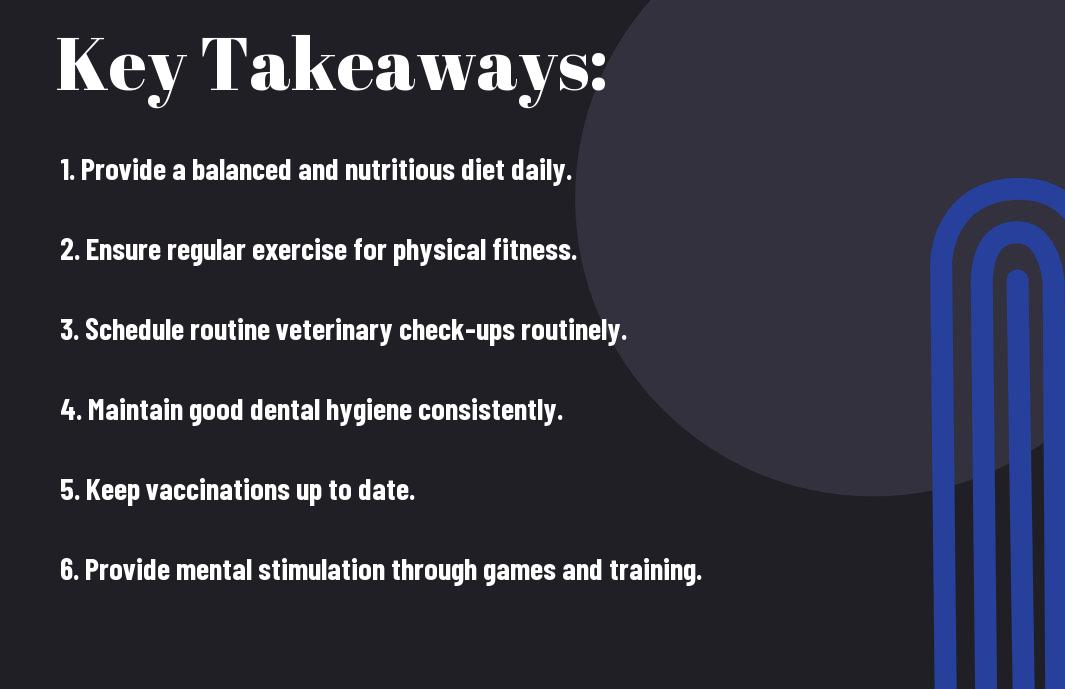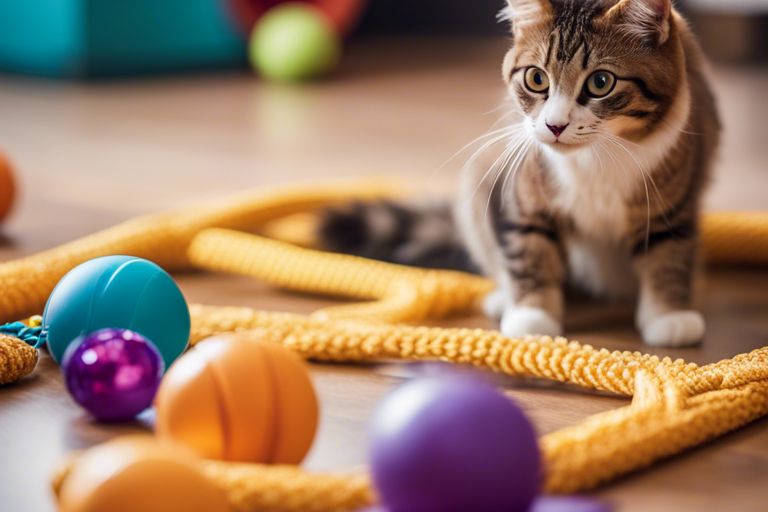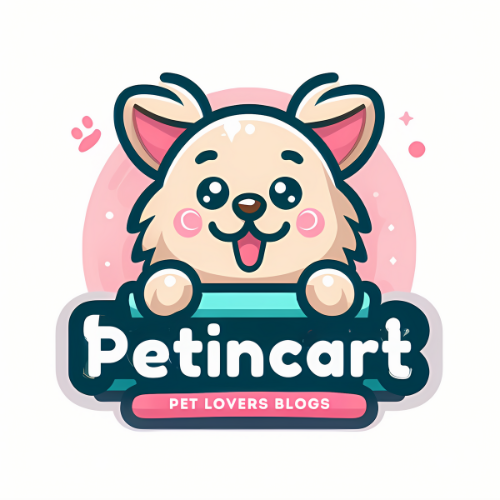You may find that incorporating ephemeral challenges into your cat’s indoor routine can significantly enhance their mental and physical well-being. These temporary activities, designed to engage your feline friend in novel ways, can combat boredom and promote exercise. By creating a dynamic environment filled with temporary toys or puzzles, you encourage your cat to explore and display natural instincts. This not only keeps them entertained but also fosters a stronger bond between you and your pet. Discover how these interactive experiences can significantly transform your cat’s indoor habitat!
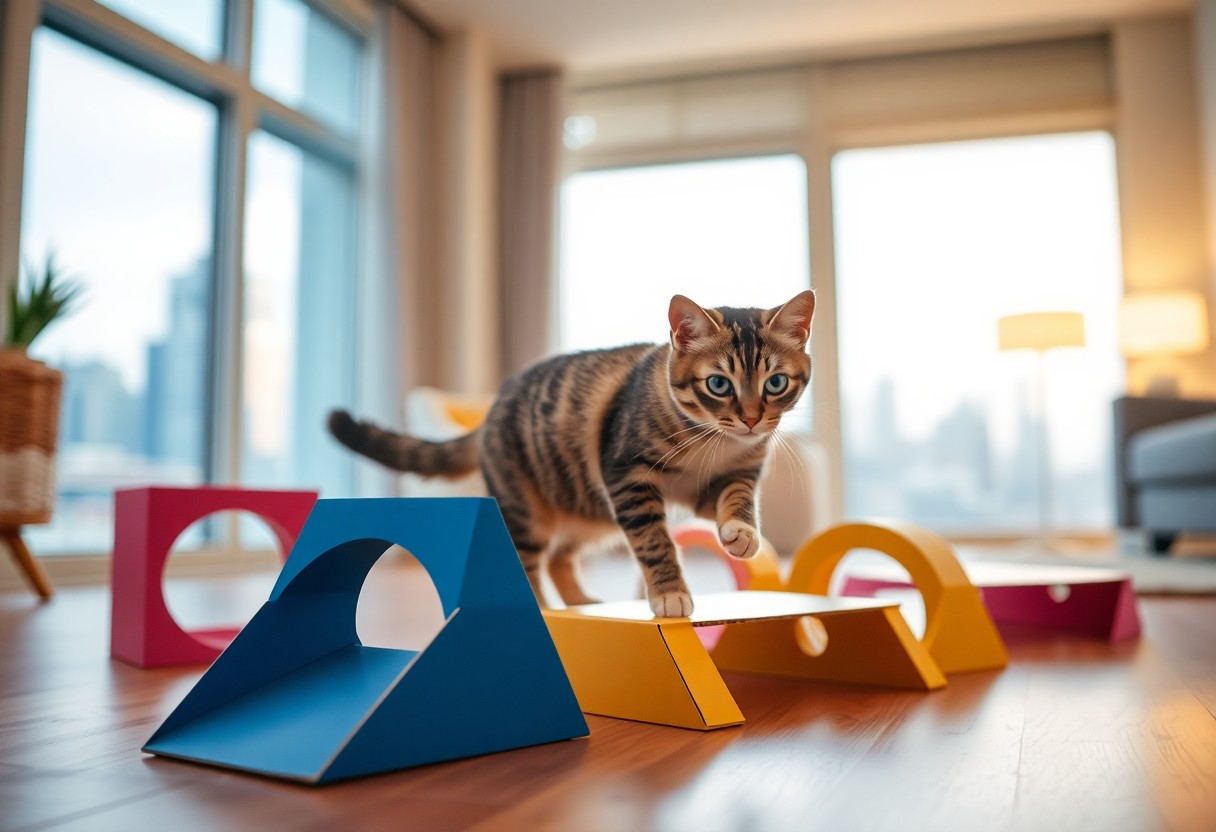
Key Takeaways:
- Ephemeral challenges can stimulate your cat’s mind and encourage natural hunting instincts, making indoor life more engaging and fulfilling.
- Introducing varied and time-limited activities can help alleviate boredom, reduce stress, and encourage exercise, contributing to overall well-being.
- Rotating challenges frequently keeps the indoor environment dynamic, preventing your cat from becoming too accustomed to their surroundings.
The Psychology Behind Indoor Cats
Understanding the psychology behind your indoor cat can enhance their overall happiness and well-being. Felines have evolved as skilled hunters and thrive in environments that mimic their natural instincts. Indoor cats may exhibit behavioral issues, such as aggression or lethargy, when they are deprived of adequate stimulation. By creating a dynamic and enriched environment, you can help your cat exhibit more natural behaviors and ultimately lead a more fulfilled life, enhancing both their mental and physical health.
How Environment Shapes Feline Behavior
Your cat’s environment plays a significant role in shaping their behavior and overall mood. Features like scratching posts, climbing structures, and cozy resting spots cater to their instincts and needs. Providing vertical spaces for climbing or hiding spots can reduce stress and anxiety, leading to better interactions with you and the environment. An enriched space encourages exploration and satisfies their curiosity, crucial for a healthy indoor cat.
The Role of Play in Mental Stimulation
Playtime is vital for stimulating your cat’s mind and keeping them active. Regular engagement in interactive play encourages problem-solving and physical exercise, allowing your cat to exercise innate hunting skills. Toys that mimic prey, such as feather wands, laser pointers, or puzzle feeders, can keep your cat entertained while sharpening their mental acuity. In fact, studies show that cats that engage in daily play sessions are less likely to develop behavioral problems, underscoring the crucial role of play in their overall health.
Engaging your cat in playtime not only provides exercise but also strengthens your bond with them. Consider setting aside at least 15 minutes each day for focused play. Experiment with different types of toys and games to see what intrigues your feline friend the most. Incorporating variety keeps the experience fresh and exciting. You may also want to integrate play into their daily routine by hiding treats or toys around the house, encouraging them to explore and hunt in the safety of their environment. This combination of physical activity and mental challenge can have profound impacts on your indoor cat’s happiness and behavior.
Unpacking Ephemeral Challenges
Ephemeral challenges introduce a dynamic element to your cat’s daily indoor experience, breaking the monotony of routine. These temporary activities can inspire curiosity and mental engagement, tapping into your feline friend’s natural instincts. By offering varied stimuli, you can create a more enriching environment that keeps your cat entertained and satisfied, significantly enhancing their overall quality of life.
Defining Ephemeral Challenges in Pet Care
Ephemeral challenges are short-lived activities designed to engage cats, encouraging them to think, play, and explore. Unlike continuous toys or puzzles, these challenges are temporary and can change daily or weekly, providing fresh experiences. This helps maintain your cat’s interest while promoting exercise and mental stimulation, key components for a happy, healthy pet.
Examples of Short-lived Activities That Engage Cats
Your cat will enjoy a variety of short-lived activities that can be easily rotated. Try introducing new toys, like feather wands or interactive laser pointers, for a few days, then switch to cardboard boxes or crumpled paper. You can also create scavenger hunts with treats hidden around the house or set up a temporary obstacle course with tunnels and chairs. Each of these activities encourages exploration and play while keeping your cat on their toes.
For instance, consider a rotating system of puzzle feeders that challenge your cat to work for their meals. One week you might use a toy that dispenses kibble with every nudge, while the following week you could switch to a homemade treat hunt inside different room corners. Another engaging activity could be a DIY box maze filled with crinkly paper for a sensory experience. These changes keep your cat stimulated, preventing boredom and ensuring they remain active and engaged in their indoor environment.
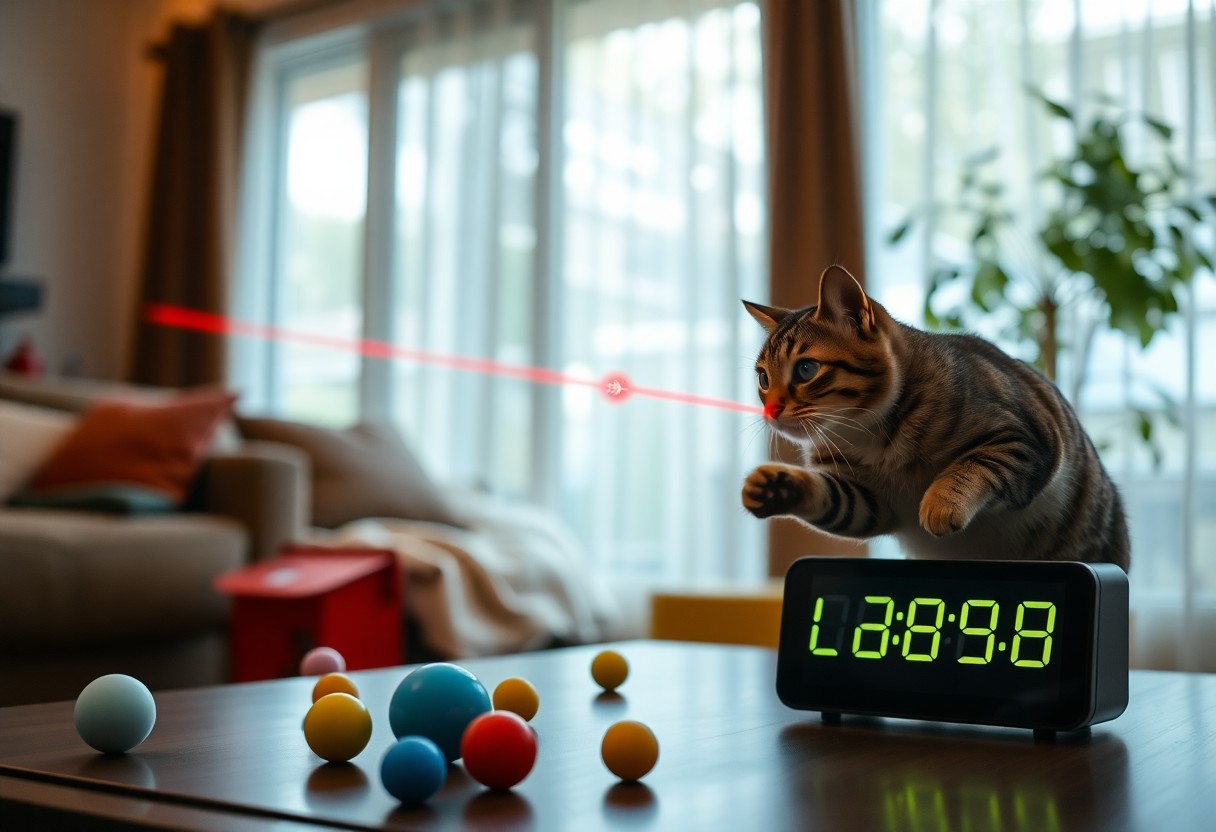
The Benefits of Introducing Timed Challenges
Timed challenges provide a captivating way to engage your cat, igniting their instincts while enhancing their cognitive skills. These short bursts of play can focus their energy, making even the most reluctant of cats more active and involved. Stimulating your feline friend not only keeps them entertained but can also reduce the chances of behavioral issues stemming from boredom. Alice, a cat owner in Seattle, observed significant improvements in her cat’s playfulness when she introduced quick 10-minute challenges three times a week, illustrating the positive impact of structure in playtime.
Enhancing Problem-Solving Skills in Cats
Introducing timed challenges can sharpen your cat’s problem-solving abilities by encouraging them to think strategically. As they navigate obstacles or hunt for treats hidden in puzzle toys, they learn to assess their environments and develop techniques for overcoming challenges. In a study, cats showcased improved skills and adaptability through consistent engagement in these games, enabling them to deal with stressors more effectively.
Strengthening the Human-Cat Bond through Collaborative Play
Participating in timed challenges with your cat fosters a unique bond built on collaboration and trust. Sharing these experiences allows both of you to connect, giving your cat the reassurance they need while enriching your interactions. Utilizing tools such as feather wands or treat puzzles as a team creates an atmosphere of mutual engagement, encouraging your cat to rely on you as a partner in play.
Collaborative play breaks the barrier of mere companionship, transforming it into a deeply interactive relationship. Engaging your cat in timed challenges shows them that you are not just another human in their territory; you are a teammate in their adventure. As you both work together to conquer these tasks, you reinforce their trust in your presence, creating a stronger emotional connection, which can ultimately lead to a happier, more balanced environment for both of you. Your investment in these shared moments often translates into a more content and well-adjusted cat, enhancing the overall quality of your shared life.
Crafting Your Own Ephemeral Challenges
Designing ephemeral challenges tailored for your cat can be an exciting venture into creativity. Use everyday household items to forge unique experiences; for example, create a scavenger hunt with treats hidden in different rooms or utilize an empty box for a fun maze. The key lies in variety and novelty – regularly changing the challenges keeps your feline engaged and eager to explore.
Creative Ideas for Indoor Cat Activities
Engage your cat with transformative and playful activities such as setting up a DIY obstacle course using cushions, chairs, and tunnels, or organizing playtime with laser pointers and feather wands. Stimulating their hunting instincts through interactive puzzle toys also satisfies their curiosity while providing mental enrichment. These creative pursuits not only entertain but also strengthen your bond.
Safety Considerations and Tips for Implementation
While crafting these challenges, keeping your cat’s safety in mind is imperative. Ensure that all items you use are non-toxic and cannot be easily swallowed or caught. Supervise playtime to prevent any accidents, especially with new items or homemade obstacles. After introducing these activities, regularly assess their environment for any potential hazards.
- Use only safe, non-toxic materials for play.
- Monitor your cat’s behavior during challenges.
- Regularly check for hazards that may arise.
- Adjust challenges based on your cat’s comfort levels.
- After these considerations, you can create a safe, enriching indoor space.
Maintaining safety during your cat’s playtime is not only about the immediate environment but also about understanding your cat’s behavior and reactions. Some cats may be more cautious and need gentle encouragement, while others might be extremely adventurous. Observe how your pet interacts with new materials or challenges, making adjustments as necessary to ensure a safe but stimulating experience. After establishing a routine, you can fine-tune the complexity of the challenges based on their preferences and confidence levels.
- Be observant to detect signs of stress or hesitation.
- Remove any items that pose a choking hazard.
- Keep play areas free from harmful objects.
- Introduce new challenges gradually to avoid overwhelming them.
- After monitoring reactions, you can adapt activities to fit your cat’s unique personality.
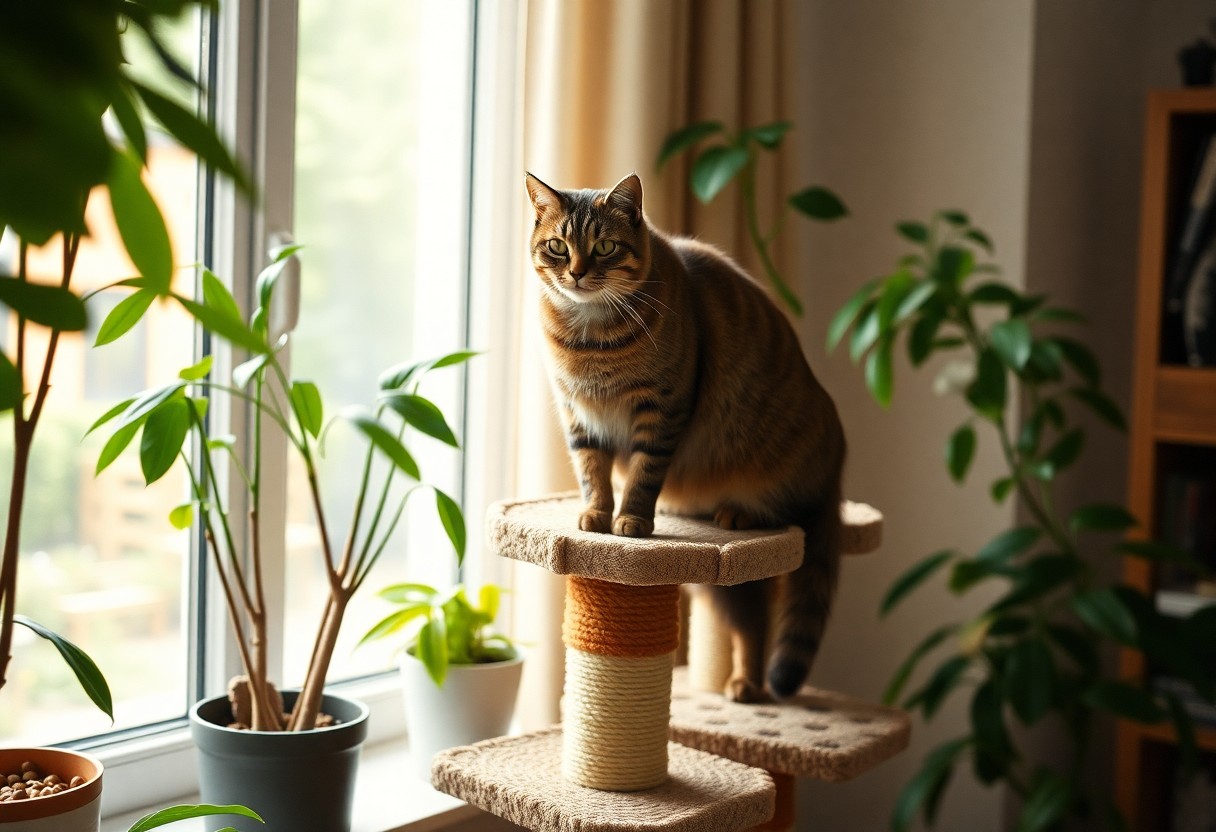
Case Studies of Successful Transformations
- Case Study 1: A 3-year-old domestic shorthair named Bella engaged in a series of 4-week challenges, resulting in a 50% increase in playfulness, measured by the frequency of play sessions recorded.
- Case Study 2: Whiskers, a 5-year-old tabby, completed a 6-week puzzle feeder challenge, which not only improved his cognitive skills but also led to a 30% reduction in obesity rates, allowing him to maintain a healthy weight.
- Case Study 3: Mochi, a 2-year-old Maine Coon, participated in a time-based agility challenge, achieving a 40% improvement in speed and responsiveness as documented during timed sessions over 8 weeks.
- Case Study 4: A household with multiple cats implemented variety-based challenges, observing a 70% increase in overall engagement and interactions among the pets, fostering social bonds.
Transformative Stories of Indoor Cats
Through the implementation of ephemeral challenges, many cats have undergone remarkable transformations. One indoor cat, Luna, who was previously disinterested in her surroundings, began to explore the world beyond her perch after a series of scent-based challenges, leading to newfound confidence and vigor. Her owner noted significant changes not only in her behavior but also her overall mood, as Luna became more interactive and engaged in playtime.
Common Themes and Lessons Learned
Across various case studies, common themes have emerged that highlight the effectiveness of ephemeral challenges. Many cat owners observed a marked increase in their pet’s activity levels and problem-solving skills after integrating creative and time-based tasks. Engagement levels often peaked during more interactive challenges, reinforcing the idea that variety is key in maintaining interest. It’s necessary to consider the individual cat’s temperament and preferences to customize their challenges effectively.
The data suggests that ephemeral challenges promote both physical activity and mental stimulation, building a more enriching indoor environment for your cat. Challenges that include a variety of textures, scents, and play styles often yield the highest engagement. Furthermore, owners reported increased bonding time during these activities, reinforcing the human-animal connection. By customizing challenges according to your cat’s interests, you can create an engaging indoor atmosphere that fosters well-being and happiness.
To wrap up
Summing up, incorporating ephemeral challenges into your cat’s indoor experience can dramatically enhance their mental stimulation and physical activity. By introducing new tasks and temporary puzzles, you encourage curiosity and engagement, keeping your feline companion entertained and happy. Regularly rotating these challenges helps prevent boredom and maintains your cat’s interest over time. Ultimately, a dynamic indoor environment enables your cat to thrive, fostering overall well-being while strengthening the bond you share.
FAQ
Q: What are Ephemeral Challenges and how can they impact my indoor cat’s well-being?
A: Ephemeral Challenges refer to temporary or short-lived activities designed to engage your cat’s natural instincts and curiosity. By introducing these challenges into your cat’s indoor environment, you can stimulate their mind and encourage physical activity. This can lead to improved mental health, reduced boredom, and overall happiness. Activities could include puzzle feeders, scent trails using treats, or using toys that promote hunting behaviors. These challenges can highlight the importance of play and exploration, keeping your cat mentally sharp and physically fit.
Q: Can I create my own Ephemeral Challenges at home, and what materials might I need?
A: Absolutely! Creating your own Ephemeral Challenges is not only fun but also allows you to tailor activities specifically to your cat’s preferences. You can utilize common household items such as cardboard boxes, paper bags, or even kitchen utensils. For example, hide treats in different boxes or create a maze with obstacles for your cat to navigate. Toys that engage their senses, like feather wands or laser pointers, can also be integrated. Be creative and observe which activities your cat seems to enjoy the most, as this will help in enhancing their indoor experience.
Q: How frequently should I introduce new Ephemeral Challenges to my cat’s routine?
A: Introducing new Ephemeral Challenges on a regular basis is key to keeping your cat engaged and interested. A good rule of thumb is to introduce a new challenge every week or biweekly. This frequency allows your cat enough time to explore and enjoy each new activity without becoming overstimulated. Additionally, rotating challenges can also help maintain their excitement and prevent the development of a predictable routine. Pay attention to your cat’s behavior and adjust based on their reactions to each challenge to find a balance that works best for them.
